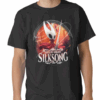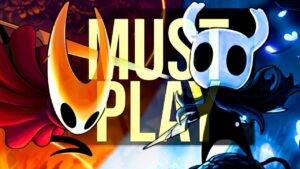The gaming world holds its breath for the release of Hollow Knight: Silksong, the highly anticipated sequel to Team Cherry’s masterpiece. What began as a downloadable expansion blossomed into a full-fledged standalone adventure, shifting the spotlight to the enigmatic Hornet. However, recent previews and extensive gameplay discussions have ignited a fiery debate within the community. A viral Reddit thread, synthesising the experiences of countless players, poses a compelling question: has Team Cherry crafted a challenge that is brilliantly demanding, or intimidatingly brutal? The buzz around Hollow Knight Silksong has sparked intense discussions on Silksong difficulty, with many veterans comparing its demanding gameplay to the original’s more gradual learning curve. While some hail it as a bold evolutionary step, others worry its steep challenge could alienate newcomers. Let’s explore the key differences driving this conversation.
The Jump in Difficulty: Enemies and a Combat Overhaul
From the moment players take control of Hornet in Pharloom, it becomes clear that this is a different kind of journey. The community consensus, aggregated from countless player accounts, highlights a significant ramp-up in combat intensity. Where the original game’s early enemies like the Aspid or Tiktik had simple, predictable patterns, Silksong’s regular foes boast expanded, aggressive movesets.
A common observation is that even basic enemies often deal a staggering two masks of damage from the outset. This transforms early zone encounters into strategic battles, making them feel akin to facing mid-game Hollow Knight bosses. Players describe being “obliterated” by ants with multi-hit combos or birds that unleash unpredictable projectile barrages. This design philosophy forces a more cautious, analytical approach from the very beginning.
Hornet’s own arsenal is a double-edged sword. Her faster, more fluid moveset—featuring abilities like a dedicated parry and a diagonal nail pogo—is empowering in the hands of a expert. However, it actively punishes the muscle memory developed over dozens of hours with the Knight’s more straightforward movement. The learning curve isn’t just about new enemies; it’s about unlearning the old way to fight. This overhaul is central to the Silksong difficulty conversation. In Hollow Knight Silksong, even the journey to find the Silksong bosses is a trial, with regular foes turning routine navigation into a strategic marathon.
>>> Why Can’t We Stop Playing Hollow Knight: Silksong? A Deep Dive into the Addiction
Boss Fights and Platforming Precision
If the regular enemies are a wake-up call, the boss encounters are the main event. Community previews point to fights like the Bell Beast or the Widow being “nightmarish” due to their relentless attack patterns, high damage output, and strikingly limited windows for healing. This contrasts sharply with the original game’s more forgiving early bosses like the False Knight or Gruz Mother.
The challenge isn’t confined to combat. Platforming sections have also seen a significant complexity spike. Players report intricate sequences requiring perfect diagonal pogo jumps over insta-kill hazards like red flowers or lava pits. These segments are described with a familiar, fraught admiration—reminiscent of the infamous Path of Pain—suggesting that environmental navigation will be a core test of skill.
Amidst these challenges, Team Cherry has provided new tools for adaptation. The game’s sequence-breaking potential and the new Crest system (allowing for moveset swaps and customisation) offer veterans ways to tackle problems with creativity. However, this leads to a pressing question: with terrain, mobs, and Silksong bosses all posing such a severe threat, is Hollow Knight Silksong designed with the assumption that players have already mastered its predecessor?
Community Perspectives: A Division of Love and Frustration
The player base, as seen in discussions, is fascinatingly split. On one side, seasoned veterans who conquered the Pantheon of Hallownest express being humbled anew. For them, the steep challenge is a welcome evolution, a true test that separates the dedicated from the casual. They argue that the original Hollow Knight was equally brutal on a first blind playthrough before attack patterns and strategies became second nature.
Conversely, other players voice frustrations over aspects that compound the difficulty, such as long runbacks to bosses and a more linear, corridor-like map design in early areas that limits exploration as a respite. Some draw comparisons to the recent Elden Ring DLC, questioning if the high damage values constitute a “fair” challenge or an artificial difficulty spike. Despite this, a thread of optimism runs through the community: a belief that, as with all great games, players will adapt, learn, and ultimately triumph.
>>> Can You Tell Me Everything About Hollow Knight: Silksong?
Your Key Questions on Hollow Knight: Silksong Answered
Drawing from the community’s burning questions, let’s address some common queries:
-
What makes Hollow Knight Silksong harder than the original?
Primarily, it’s the combination of enemies dealing double damage from the start and their far more complex, aggressive AI. The game expects mastery much earlier. -
Are Silksong bosses too punishing for beginners?
For players completely new to the genre, yes, they will be extremely punishing. However, Hornet’s enhanced mobility and tools, like the ability to heal while using her Silk ability mid-air, provide new avenues for counter-play that dedicated players can master. -
How does Silksong difficulty affect exploration?
The heightened threat can make the world feel more claustrophobic and corridor-like initially, as players are funnelled through challenging set-pieces. However, the new Crest system promises to add immense replayability and routes for sequence-breaking on subsequent playthroughs. -
Is Hollow Knight Silksong worth the challenge?
For fans of the original seeking growth and a fresh, profound challenge, absolutely. For complete newcomers to the genre, it may be advisable to start with the first game to build foundational skills.
Conclusion: A Deliberate and Rewarding Challenge
So, is Hollow Knight: Silksong too hard? The evidence suggests it is not “too hard” but rather a deliberate and significant escalation designed to reward persistence, adaptation, and mastery. It is a game that respects the player’s ability to grow, crafted for an audience that has already conquered one kingdom and craves a new, greater trial.
For those feeling daunted, the community advice is sound: experiment relentlessly with the Crest system, and don’t be afraid to revisit Hallownest to solidify the basics. Team Cherry’s vision is clear—to push the boundaries of the genre they helped define. Hollow Knight Silksong is poised to stand not as a mere follow-up, but as a worthy and legendary sequel in its own right.
What do you think? Are you excited for the heightened challenge, or are you concerned? Share your thoughts and experiences in the comments below!





